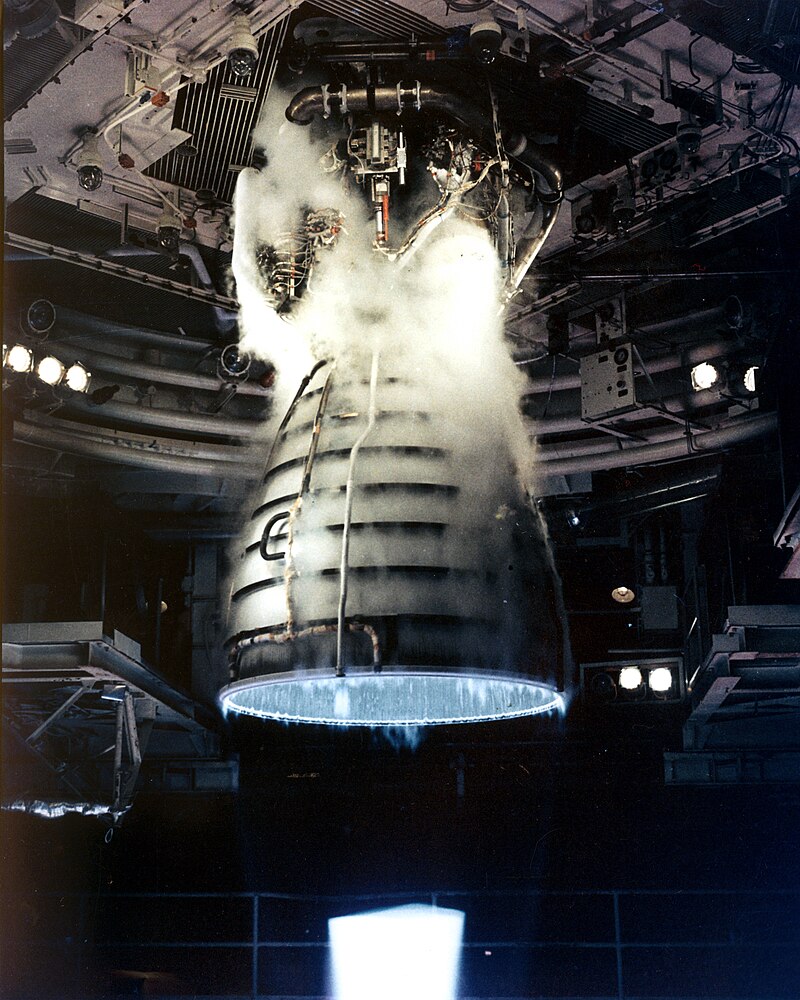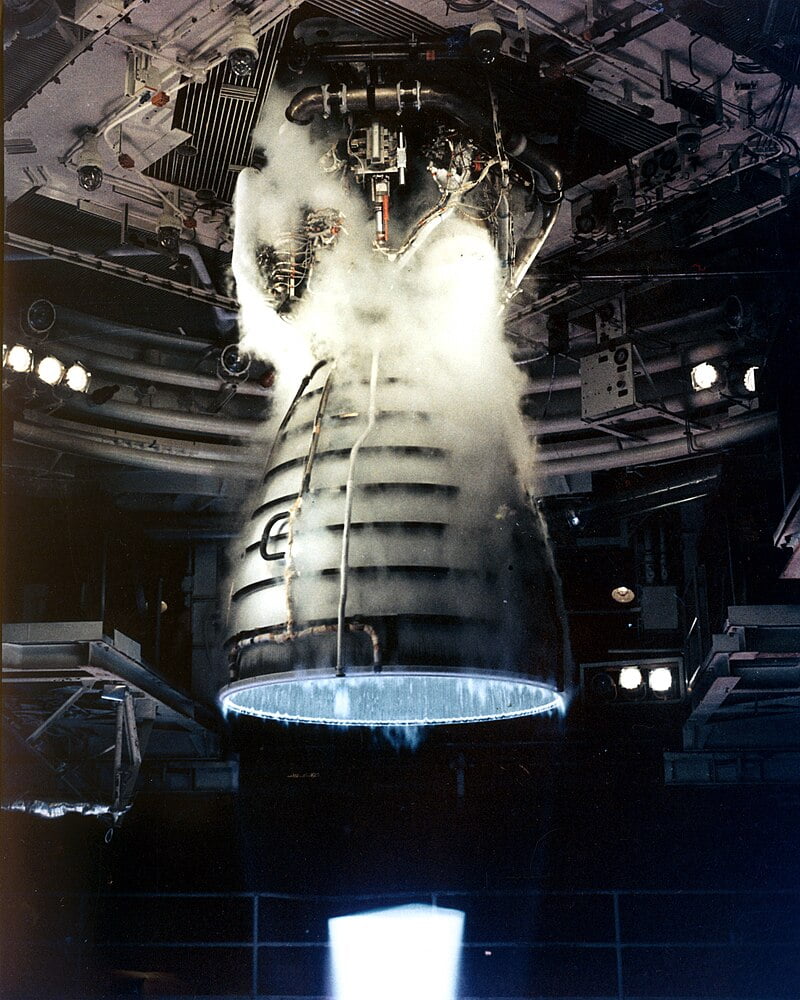What is specific impulse, why is it measured in seconds and how do you calculate it?
Introduction
There are hundreds of different factors to consider when designing a rocket engine. However, one of the most important is specific impulse.
What is specific impulse exactly?
Specific impulse (or ISP for short) is the measure of how efficient a rocket engine is. The higher the ISP, the more efficient the engine is. The more efficient an engine is, the less fuel it uses to reach the same velocity as a less efficient one.
For example, a rocket with an ISP of 450 is more efficient than one with an ISP of 300.
Why is specific impulse measured in seconds?
ISP is defined as how many seconds an engine can sustain one pound (or kilogram) of thrust if it uses one pound (or kilogram) of propellent under Earth’s gravity (approximately 9.81 m/s). This means that it is measured in seconds.
If you have a rocket with an ISP of 400, this means that it can produce 1 kilogram of thrust with 1 kilogram of propellent for 400 seconds. However, an engine with an ISP of 300 would only be able to sustain this thrust for 300 seconds. This means it can burn for less time with the same thrust and propellent, meaning it is less efficient.
How does specific impulse change under different gravitational conditions?
A rocket engine’s efficiency does change with the gravitational conditions of other celestial bodies (like another planet, moon, star etc). For instance, a rocket engine would be less efficient under the gravitational force of Saturn (approx. 10.44 m/s²), but more efficient on Mars, which has lower gravity (approx. 3.72 m/s²) than Earth.
For this article, however, we’ll be assuming that the engine is producing thrust under Earth’s gravity (also known as standard gravity)
How do you calculate specific impulse?
ISP can be calculated with a few methods. The three we’ll be taking a look at in this post are the
- Thrust and propellant flow rate formula
- Effective exhaust velocity formula
- The rocket equation
Thrust and propellant flow rate formula
This formula can be used to calculate specific impulse if you know your engine’s thrust and how many kilograms of fuel per second it uses. Here’s the formula:
\[ I_{sp} = \frac{F}{\dot{m} \cdot g_0} \]
- \( I_{sp} \) is the specific impulse (measured in seconds)
- \( F \) is the thrust of the engine (measured in newtons)
- \( \dot{m} \) is the fuel mass flow rate
- \( g_0 \) is the standard gravity (the gravity on Earth, approx 9.81 m/s2)
As an example, let's say that an engine produces 2.26 million newtons of thrust and has a fuel mass flow rate of about 700 kg/s.
If we put those values into the equation (remember to use 9.81 m/s2 for the standard gravity), we get this:
This means the specific impulse is approx 329 seconds.
Effective exhaust velocity formula
If you know the velocity of the propellent coming out of the engine’s nozzle, you can use the effective exhaust velocity formula to calculate specific impulse. Here it is:
In this formula:
- \(I_{sp}\) is the specific impulse
- \(v_e\) is the effective exhaust velocity (how fast the propellant is coming out the engine nozzle)
- \(g_0\) is the standard gravity (9.81 m/s2)
As an example, let's say the exhaust velocity of an engine is approx 3500 m/s. If we plug this into the formula (and the standard gravity) we get this:
This means the ISP of a rocket engine with an exhaust velocity of 3,500 m/s (about 3.5 km/s) is approximately 357 seconds.
The rocket equation
The rocket equation is one of the most famous and important formulas in rocketry.
It tells you how fast (or how much the rocket can change its velocity) a rocket can go given how much it weighs before and after it has used all its fuel (wet and dry mass). Here's the formula:
In this equation,
- \(\Delta v\) is the change in velocity (the \(\Delta\) sign means change)
- \(v_e\) is the exhaust velocity (the same as in the previous equation, so keep this in mind)
- \(m_0\) is the mass of the rocket with all its propellent (aka its 'wet mass')
- \(m_f\) is the mass of the rocket without its propellent (aka, its 'dry mass', when the rocket has used all its fuel).
To keep things simple, I won't be going into the rocket equation too much in this blog post. However, I might write one about it at some point in the future, so if you would like to be notified, be sure to sign up for my mailing list!
Changing the rocket rocket equation so we can use specific impulse
Do you notice that \(I_{sp}\) isn't showing in the rocket equation? Well, if you remember from the effective exhaust velocity formula, \(I_{sp} = \frac{v_e}{g_0}\). But wait, \(v_e\) shows up in the rocket equation!
So, what if we rearrange the effective exhaust velocity formula to make \(v_e\) the subject, then substitute the expression for \(v_e\) into the rocket equation? Well, it's do that:
So, the effective exhaust velocity (\(v_e\)) is equal to the ISP multiplied by the standard gravity. If we subsite this into the rocket equation for \(v_e\), we get this:
This is the other form of the rocket equation, the one that you can use to take into account ISP.
Rearranging the rocket equation to make ISP the subject
We'll try an example in a bit, but first, we need to rearrange this formula to make \(I_{sp}\) the subject:
Now the ISP is the subject, we can plug in some values into the formula to find the ISP.
As an example, we wish to design a rocket that can change its velocity by 4,000 m/s. It starts with a dry mass of 80,000 kilograms. To fuel it, you add 1,000,000 kilograms of fuel into its tanks. What would the ISP of the engines have to be in order to reach this target?
First, we need to calculate \(m_0\). Because this is the total mass of the rocket, dry mass plus its fuel, we need to add the rocket's dry mass and the mass of its fuel together. So, 80,000 + 1,000,000 = 1,080,000 kg. If we plug in all these values (including the standard gravity of 9.81 m/s2), we get the following:
At only about 157 seconds of ISP, this isn't a very efficient rocket engine at all.
Examples of ISP in real-life rocket engines
The Rocketdyne F-1

This engine was used for the first stage of the Saturn 5. This rocket was used for each of the Apollo missions, making this engine a significant part of history. It has an ISP of 263 seconds at sea level, and 304 seconds in vacuum.
The RS-25

This engine was used as the main engine for the space shuttle and for the main core of the SLS rocket, NASA's current moon rocket for its Artemis program. The engine has an ISP of 366 seconds at sea-level, and 452.3 seconds in vacuum.
Conclusion
Specific impulse is a very important factor in rocket engine design. The more efficient an engine is, the further it can go into the cosmos, exploring other planets and moons, and gathering data from the tiniest sub-atomic particles, to the largest black holes in existence.
While current engine designs are reasonably efficient, they do need to be improved by orders of magnitude before dirt-cheap, regular space travel can occur. Future designs, like the nuclear thermal propulsion engines, could have an ISP of 900 seconds or more, which would be a massive leap forward for space travel.
Interested in learning more about maths?
This blog post used various mathematical techniques, including rearranging and solving equations. If you would like to learn more about these (and so much more!), then check out my eBook, A Beginner’s Guide to Algebra, Quadratics and Inequalities, available for just £4.99.
If you know someone else who might be interested in this eBook, feel free to share it with them. Thank you for reading, and have a great day!



